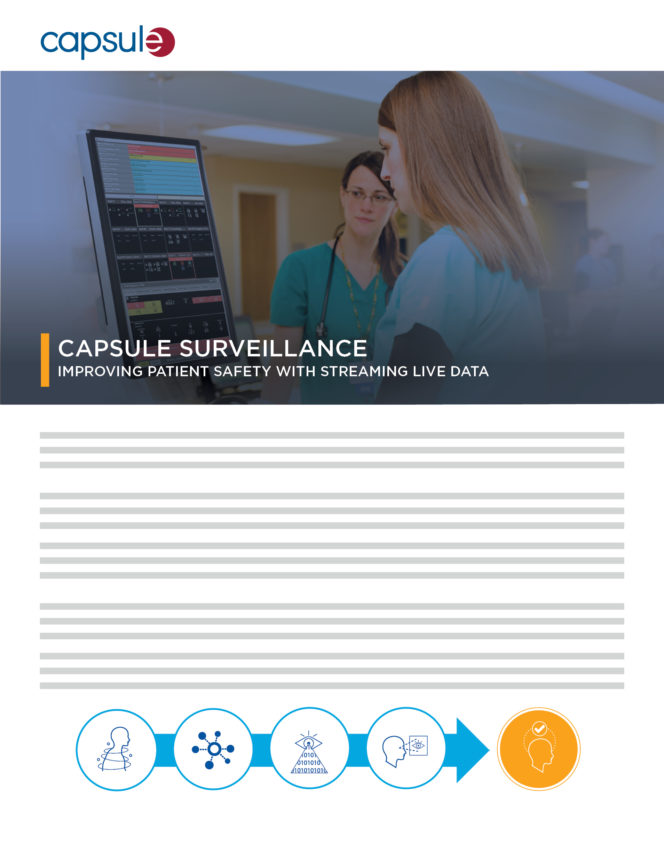How real-time clinical surveillance is feasible beyond the ICU
During the COVID-19 pandemic, the world’s attention has been focused on intensive care units (ICUs) and their bed availability. Certainly, the ICU and the many monitoring and therapeutic patient care devices used there to maintain and manage the patient’s airway, breathing and circulation (ABCs) deserve such public and industry attention.
Monitoring of patients with COVID-19, or any condition, occurs in many areas of the hospital outside of these high-acuity departments. Additional staffing resources would be helpful to support this monitoring. However, hospitals expect to lose at least $323 billion this year due to massive COVID-19-related revenue losses, making hiring additional clinicians cost–prohibitive without a significant increase in demand for elective care.
Supporting current clinicians and preventing adverse events throughout the hospital are possible with an enhanced clinical surveillance strategy that involves new data-driven workflows. Enhanced real-time clinical surveillance goes beyond standard monitoring of physiologic parameters to help detect emergent clinically actionable events. The automated data analysis and early detection support greater operational efficiency and enable clinicians to safely care for larger numbers of patients.
Data Gaps Outside the ICU
Before COVID-19, more than 40,000 patients per year in the U.S. alone needed emergency intubation and mechanical ventilation, a number that has likely significantly increased due to the pandemic. This critical patient care is costly considering interventions for opioid-induced respiratory depression are estimated to cost at $2 billion per year while complications associated with mechanically ventilated patients are estimated to exceed $1 billion annually.1
Part of the reason for these poorer and more costly outcomes is outside of the ICU, monitoring of vital signs can be episodic, roughly every four to six hours, depending on hospital or unit policies. Episodic data collection can result in gaps that do not capture key vital signs activity, which increases the risk of an adverse event, such as in-hospital respiratory failure, which has been associated with a mortality of nearly 40%.2
Continuous capture of medical device data alone, however, will not solve this challenge, even when the devices are integrated through a single platform. A stream of unfiltered data can be impossible to coherently interpret by a single clinician responsible for numerous patients, especially with the many devices that patients require. Such an unmanaged data flow would also increase nuisance alerts that contribute to the alarm fatigue still reported as a top–10 patient safety concern by ECRI,3 as well as a waste of PPE when clinicians unnecessarily intervene with COVID-19 patients.
Smarter Surveillance
Instead of responding to every alert or concerning device output in person, hospitals need to be more strategic with their surveillance workflows. That requires clinicians in the ICU, but also in lower-acuity departments be equipped with remotely available analytic tools, such as those available through Capsule Technologies’ Medical Device Information Platform (MDIP), that make sense of the stream of real-time patient data coming from devices.
The data flow captured from the devices through MDIP is compared to historical EHR information to identify clinically relevant trends, sustained conditions, reoccurrences, and combinatorial indications. This meaningful and relevant stream of easily interpretable insight helps clinicians predict health decompensation, which can prevent harm and improve outcomes.
Along with analytics, Capsule’s MDIP enables clinicians to configure alerts so that they are relevant and clinically actionable, even more crucial for COVID-19 patients to limit virus exposure to clinicians. Alerts are integrated and bolstered with additional context, such as patient identification and location, trended data, device settings and other measurements at the time the alert occurred.
To accommodate the increased patient load rendered by the pandemic, hospitals have changed the layout of their facilities, necessitating the use of technology to improve accessibility in units not normally employed for high acuity care. Ventilated patients are not only limited to the ICU but also distributed amongst other reconfigured units as well. Administering timely, effective care given the increased patient–to–nurse ratio becomes difficult. Capsule’s alerts, however, can be dispensed to clinicians’ portable or mobile devices, allowing patient surveillance beyond the workstation alone.
Early Detection Essential
Early detection of patient deterioration for patients with COVID-19 or any condition is especially challenging outside of the ICU where the ratios of patients to clinicians are typically higher. Real-time clinical surveillance available in MDIP that leverages analytics and smart alerting, however, presents a significant opportunity for hospitals and health systems to make early detection and proactive interventions a reality.
###
About the authors:
Jessica Serrao is a Data Scientist in the Clinical Informatics Department at Capsule Technologies.
John Zaleski, PhD, NREMT is Head of Clinical Informatics for Capsule Technologies.
Learn how Capsule Surveillance is improving patient safety with streaming live data
Download